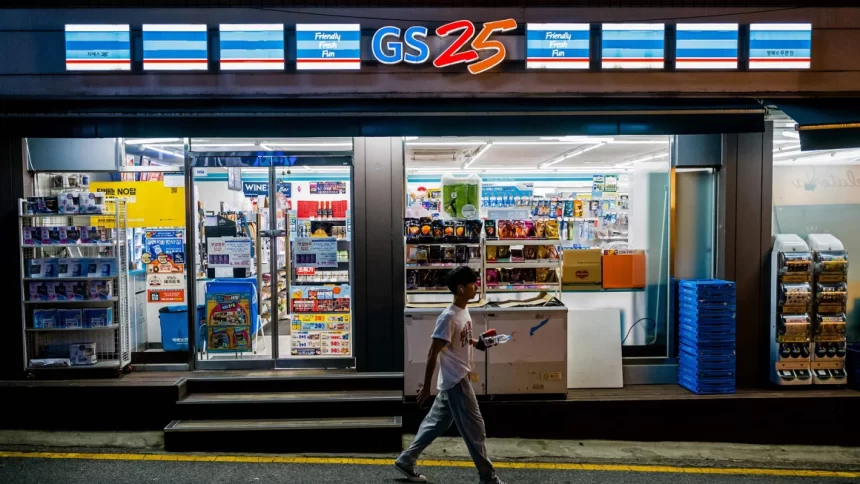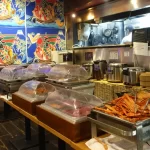Imagine this: you need to pick up a package, top up your metro card, grab lunch and take out some cash.
In most places, that would probably mean separate trips to the post office, the subway station, a restaurant and an ATM. But in South Korea, all that – and more – can be done at your nearest convenience store. And you probably won’t have to travel far to find one.
South Korea has become the global king of convenience stores, both online and off – with social media influencers and tourists joining locals in flocking to a rapidly growing number of stores across the country.
By the end of last year, there were more than 55,200 convenience stores in the nation of 52 million, according to the Korea Convenience Store Industry Association – roughly one for every 950 people.
That’s more than the total number of McDonald’s branches worldwide – and gives South Korea the highest density of stores per capita, overtaking Japan and Taiwan, both also famous for their abundant and versatile convenience stores.
“The convenience store industry in South Korea stands out for its remarkable density and innovative strategies,” said Chang Woo-cheol, a professor of tourism and the food service industry at Kwangwoon University in Seoul.
“They have become an essential retail channel, with the second-largest share in offline retail sales in the country.”
It’s a far cry from places like the United States, where convenience stores are usually attached to gas stations or strip malls and are rarely seen in residential areas, partly due to zoning laws. In large South Korean cities like Seoul, convenience stores are on every corner, sometimes with multiple outlets from competing companies dotting the same street.
“Convenience stores are open 24 hours a day and play an essential role in our busy lives,” Chang added – calling the South Korean industry a “global success story.”
There are a few things that set South Korean convenience stores apart.
For starters, they are a one-stop shop offering everything from food and drinks to home goods and lifestyle services. At these stores, customers can charge their phones, pay utility bills, withdraw cash, make online orders and receive deliveries – and, at certain locations, even charge their electric scooters, exchange foreign currency and send international mail.
“Convenience stores in Korea are not only a place where people can (sit) around a table amongst the clutter of beer cans on a late summer night, but also provide essential services,” said Deloitte Korea in a 2020 report, describing the country’s stores as “pampering their customers with extreme convenience.”
Then there’s the food section – a wide variety ranging from instant miso soup to cup noodles in every flavor imaginable, snacks like kimbap and onigiri, and ready-to-eat meal kits.
Combine that with in-store seating areas, microwaves and hot water dispensers, and these stores have become a go-to spot for office workers having a quick lunch, partygoers needing a late-night boost and students fueling up before grueling cram school classes.
Demand has surged over the years as South Korea has urbanized, said Chang, the hospitality professor. More than 80% of the population now live in urban centers, with many residents leaving rural areas to settle down in fast-paced cities.
Another factor is demographics. Fewer South Koreans are getting married or starting families, meaning there are more single-person households than ever – and often on tighter budgets, given the economic hardships facing many young adults.
As of 2021, about 35% of all South Korean households were single residents, according to a McKinsey report released last March. And unlike couples or large families, who may prefer to cook at home and buy in bulk from grocery stores, single residents gravitate toward the cheap, easy option of convenience stores or ordering online.
The Covid-19 pandemic contributed to this trend, with people preferring to order online or to buy things quickly from stores close to home, the report added.
Companies have capitalized on this high demand by strategically opening shops inside other existing business venues or entertainment spaces. For instance, Seoul has convenience stores in karaoke bars and the city’s arts center, the Deloitte report said.
All this has translated to huge profits. Between 2010 and 2021, Korean convenience store revenue leaped more than fourfold from $5.8 billion to $24.7 billion, surpassing traditional supermarkets and department stores, according to McKinsey, citing London-based market research company Euromonitor.










